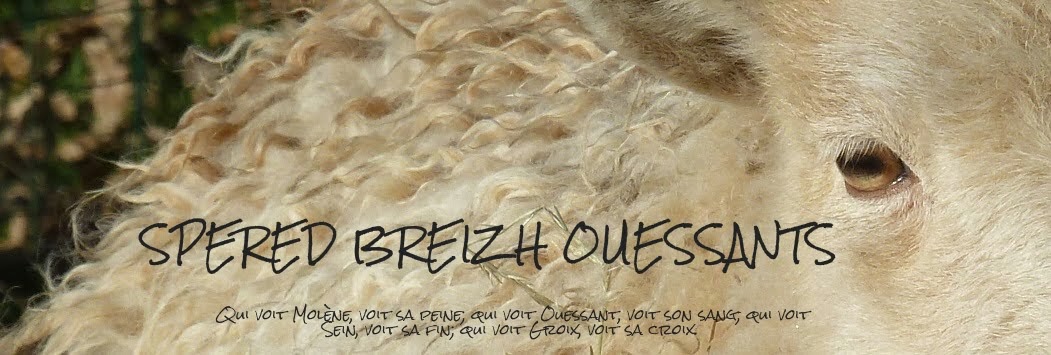dimanche 15 avril 2007
Breed Standard CTD
poor pasterns, bad hooves, legs overdeveloped
Rams, horns asymmetrical, too delicate, too tight or too open, abscence of horns.
Pie coloured
Tail too long
Ears too large
Prominant bridge in the ewe or over developed in the ram
Prescence of toggles at the throat
Admissable in young subjects, blacks lightly marked with white on the forehead, whites with rust on the neck tail or feet, these marks diminish with age.REMARKSThere appears (rarely) in some ewes, tiny horns, without any bony plate, if they are observed they cannot be considered a fault.
Outside the breed standard, it needs to be noted single births are a characteristic of the breed, twin births are rare and not sought after.
WOOL
Fleece- furnishing the forehead, and the cheeks partly. Covering all the body, descending at least to the knees and just to the hocks.
COLOURBlack, brown, chestnut, white, the pigmentation must be even throughout all the fleece.
TEXTURE
Fleece semi closed, and quite compact, locks (staple) of 8 - 10 cms for 12 months growth.
Prescence of hairs and medullated fibres at the throat - cravat (accentuated in rams) nape and britches. The hairs are similar to the rest of the fleece although, they may be a little darker.
AVERAGE THICKNESS medium 27 to 28 microns
QUALITY very soft wool to the touch, very springy
AVERAGE WEIGHT OF THE FLEECE Rams 4.5% of live weight Ewes 4%of live weight.
CAUSES OF DISQUALIFICATION Fleece outside the standard, colour uneven, marks in the fleece, fleece thin, matted , lacking texture, density, staple length.
The Ouessant Sheep originates from the island of Ouessant, part of a tiny archipelago just off the north coast of Finistere, Brittany. The island of terror as it was known to some, was swept by the full force of the atlantic’s weather, the hardy sheep adapted to survive on poor grazing from salty clifftop meadows. It was the women of the island that raised the sheep, renowned for their black wool to weave into cloth known locally as berlinge and their meat with its sweet and delicate taste.
La race "Mouton d'Ouessant" est originaire de l’île d’’Ouessant qui fait parti d’un petit archipel au large du Finistère, Bretagne. L’île de l'épouvante comme c'était connu par certains était balayé par les intempéries de l’atlantique, ces moutons rustiques s'adaptaient à survivre sur les pâturages pauvres des falaises salées. C’était les femmes de l’île qui élevaient les moutons réputés pour leur laine noire à tisser « la berlinge » une étoffe régionale et leur viande avec un goût doux et délicat.
